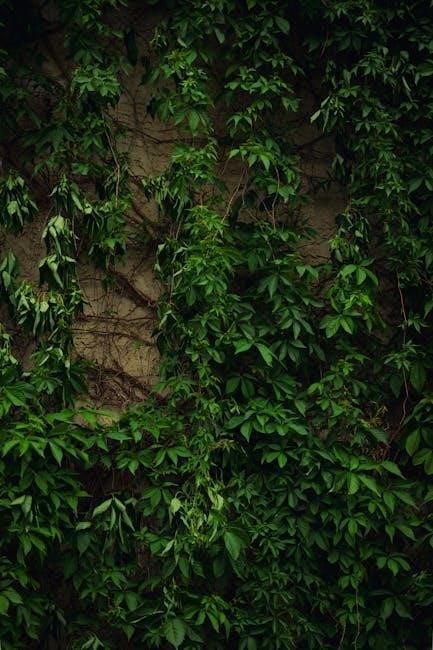Zone 3a in Canada is characterized by long, cold winters and short growing seasons. Understanding this zone is crucial for selecting plants that thrive in its unique climate conditions.
1.1 Understanding Plant Hardiness Zones
Plant hardiness zones are essential for determining which plants can thrive in specific regions. These zones are based on the average annual extreme minimum temperature, helping gardeners choose plants suited to their local climate. In Canada, Zone 3a is characterized by minimum winter temperatures ranging from -40°F to -35°F, making it a challenging yet manageable environment for gardening. Understanding these zones allows gardeners to select plants that can survive the coldest temperatures in their area. This knowledge is crucial for planning and maintaining a successful garden, ensuring that plants are neither too sensitive nor too hardy for the local conditions. By aligning plant choices with the appropriate hardiness zone, gardeners can optimize growth and reduce the risk of plant failure due to extreme weather conditions.
1.2 Importance of Knowing Your Zone
Knowing your plant hardiness zone is vital for successful gardening. It helps gardeners select plants that can survive local temperature extremes, ensuring better growth and productivity. For Zone 3a in Canada, where winters are harsh and summers are short, understanding the zone allows gardeners to choose plants that can tolerate the cold and thrive in the available growing season. This knowledge also guides decisions on planting times, soil preparation, and pest management. By aligning gardening practices with the specific conditions of Zone 3a, gardeners can avoid common pitfalls and create thriving gardens. Additionally, knowing your zone enables the use of resources like planting charts and apps, which provide tailored advice for optimal results. This targeted approach not only enhances the beauty of gardens but also improves their productivity and sustainability in challenging climates.
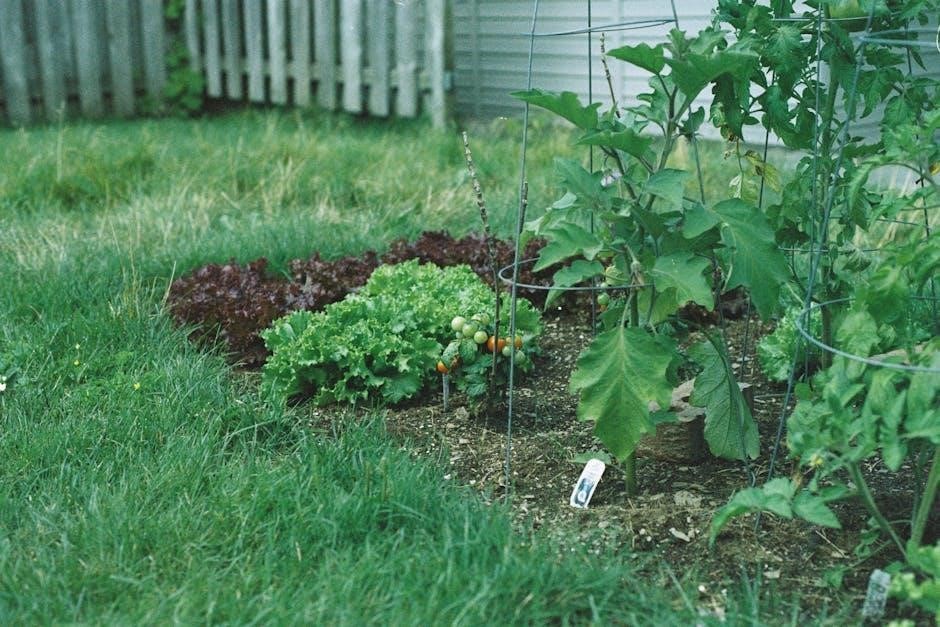
1.3 Overview of Zone 3a Climate
Zone 3a in Canada is characterized by long, cold winters and short, cool summers. The climate is classified as humid continental near subarctic (Köppen: Dfc), with extreme minimum temperatures ranging from -40°F to -35°F (-40°C to -37.2°C). Winters are snowy, and summers are moderate but brief, with average rainfall concentrated during the warmer months. This zone experiences a limited growing season, making it essential for gardeners to plan carefully. The cool summers and cold winters require hardy plants that can tolerate frost and thrive in shorter growing periods. Understanding the climate specifics of Zone 3a is key to selecting appropriate plants and strategies for successful gardening in this challenging yet rewarding environment.
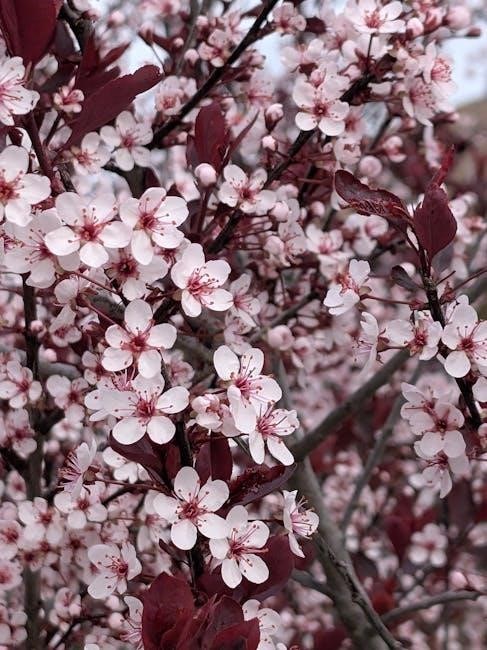
Climate and Soil Conditions in Zone 3a
Zone 3a features cold winters, moderate summers, and short growing seasons. Soil conditions vary, with acidic to neutral pH levels, requiring organic matter for fertility and drainage improvements.
2.1 Temperature Ranges and Frost Dates
Zone 3a experiences extreme cold winters, with temperatures ranging from -40°F to -35°F (-40°C to -37.2°C). The first frost typically occurs in late September, with the last frost in late May. These dates significantly influence planting schedules, as gardeners must ensure plants can tolerate early frosts. The short growing season requires careful timing for sowing seeds and transplanting. Understanding frost dates is critical to avoid damage to tender plants. Additionally, the region’s cool summers mean warm-season crops need to be selected for their ability to mature quickly. This climate necessitates strategies like using cold frames or greenhouses to extend the growing period and protect plants from unpredictable frosts.
2.2 Soil Types and Preparation
In Zone 3a, soil types vary, but many areas feature loamy or sandy soils. Proper preparation is essential due to the region’s cold climate and short growing season. Testing soil pH levels is crucial, as most plants thrive in slightly acidic to neutral soils (6.0–7.0). Adding organic matter like compost or well-rotted manure improves soil structure and fertility. Raised beds are beneficial, as they promote better drainage and warmer soil temperatures. Mulching helps retain moisture and suppress weeds, which is vital in Zone 3a’s cool summers. Ensuring soil is well-draining and rich in nutrients supports healthy plant growth despite the challenging climate conditions. Proper soil preparation lays the foundation for successful gardening in this zone, where the growing season is short and frosts are frequent.
2.3 Managing Moisture Levels
Managing moisture levels is critical in Zone 3a, where the climate features moderate rainfall and cold temperatures. The region’s short growing season and cool summers require careful water management to ensure plants receive adequate hydration without waterlogging. Soil with good organic matter retains moisture effectively, reducing the need for frequent watering. Mulching around plants helps conserve soil moisture and regulates temperature fluctuations. Irrigation should be done deeply but infrequently to encourage deep root development. Overwatering can lead to root rot and other issues, especially in areas with heavy clay soils. Monitoring soil moisture by checking the top few inches of soil ensures plants are neither parched nor waterlogged. Proper drainage systems and raised beds can also mitigate waterlogging risks, creating a balanced environment for plant growth in Zone 3a’s unique conditions.

Best Plants for Zone 3a
Zone 3a supports hardy vegetables, fruits, and perennials. Vegetables like spinach and garlic thrive, while fruit trees such as apple and cherry are suitable. Native perennials adapt well to local conditions.
3.1 Vegetables Suitable for Zone 3a
Zone 3a gardeners can successfully grow a variety of hardy vegetables. Root vegetables like carrots, beets, and radishes thrive in the cool, short summers. Leafy greens such as spinach, lettuce, and kale are excellent choices, as they tolerate frost and mature quickly. Brassicas like broccoli and cauliflower also perform well in Zone 3a’s climate. For a continuous harvest, successive sowings of lettuce, spinach, and herbs like parsley can be done. Quick-maturing varieties of tomatoes and peppers can be grown with proper protection, such as cold frames or greenhouses. Root vegetables should be planted early in the spring, while frost-sensitive crops like beans and cucumbers are best planted after the last frost date. Soil preparation and moisture management are key to ensuring optimal growth in Zone 3a’s challenging conditions.
3.2 Fruit Trees and Shrubs for Zone 3a
In Zone 3a, fruit trees and shrubs must withstand harsh winters and a short growing season. Hardy varieties like apple trees (e.g., ‘Goodland’ and ‘Rescue’) and cherry trees (e.g., ‘Saskatoon’ and ‘Pincherry’) are well-suited for this climate. Currants, gooseberries, and elderberries are excellent choices for shrubs, as they are highly resistant to cold temperatures. These plants typically require well-drained soil and full sun to thrive. Planting them in sheltered locations can protect them from strong winds and frost damage. Regular watering and mulching are essential to maintain soil moisture and regulate temperature fluctuations. Selecting disease-resistant varieties is also crucial for long-term success. These fruit trees and shrubs not only provide delicious harvests but also add beauty and biodiversity to Zone 3a gardens.
3.3 Perennials and Flowers for Zone 3a
Zone 3a gardeners can enjoy a variety of perennials and flowers that thrive in the region’s cool, short summers and cold winters. Coneflowers, black-eyed Susans, and liatris are excellent choices, offering vibrant blooms that attract pollinators. Hostas and daylilies are ideal for shaded areas, adding foliage and color to gardens. Ornamental grasses, such as fountain grass, provide texture and movement, while peonies and lupines deliver stunning spring and summer displays. These plants are resilient to frost and require minimal care. Proper soil preparation, adequate sunlight, and regular mulching are key to their success. Incorporating native perennials ensures biodiversity and adaptability to local conditions. With careful selection, Zone 3a gardens can feature a diverse array of perennials and flowers that bring beauty and vibrancy to the landscape.
3.4 Native Plants for Zone 3a
Natural beauty and resilience are highlighted by native plants in Zone 3a. Wild indigo and prairie clover thrive, supporting pollinators. Native grasses like blue grama and switchgrass stabilize soil and endure harsh winters. Shrubs such as chokecherry and Saskatoon berry offer edible fruits, while coneflower and black-eyed Susan add vibrant colors. Incorporating these plants promotes biodiversity and requires less maintenance. Native plants are well-suited to Zone 3a’s climate, ensuring a sustainable and thriving garden. They enhance local ecosystems, making them ideal for eco-conscious gardening. By choosing natives, gardeners can create a landscape that naturally adapts to the region’s conditions, providing a haven for wildlife and a beautiful display of flora. These plants are not only hardy but also contribute to the preservation of local plant species, making them a wise choice for Zone 3a gardeners.

Planting Calendar for Zone 3a
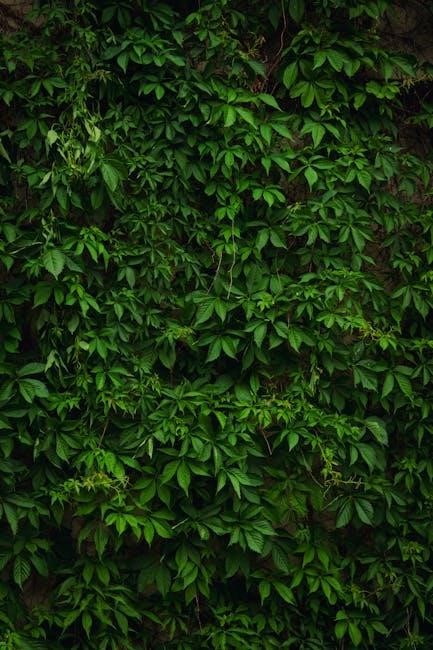
Zone 3a’s short growing season requires precise timing. Start seeds indoors early, plant cold-hardy varieties in spring, and protect from frost. Optimal planting times vary by season for success.
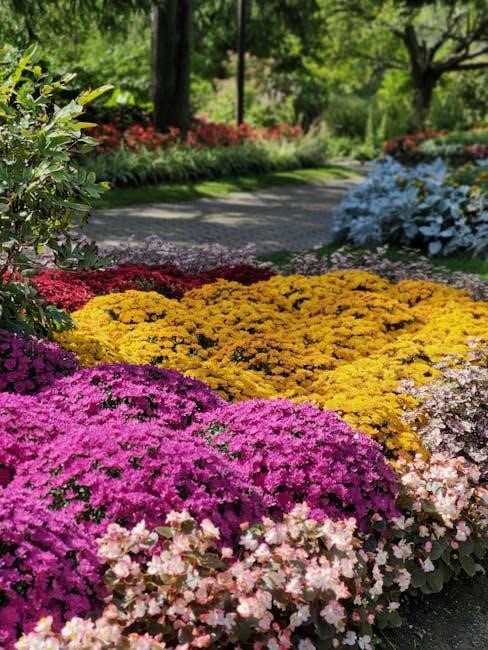
4.1 Spring Planting Guide
Spring planting in Zone 3a requires careful planning due to its short growing season. Start by preparing soil once it thaws, typically late April to early May. Focus on planting cold-hardy vegetables like spinach, lettuce, and radishes as soon as the soil can be worked. These crops thrive in cooler temperatures and can tolerate light frosts. For perennials, wait until the last frost date, usually around late May, to plant flowers and shrubs. Ensure soil is well-draining and rich in organic matter to support healthy growth. Early spring is also ideal for direct sowing peas and carrots. Monitor weather closely, as late frosts can still occur in June. Using cold frames or row covers can protect tender plants during unexpected cold snaps, ensuring a successful start to the growing season. Proper timing and protection are key to maximizing the short spring window in Zone 3a.
4.2 Summer Planting Guide
In Zone 3a, summer planting focuses on crops that thrive in cooler temperatures and mature quickly. Vegetables like green beans, cucumbers, and zucchini are ideal for mid-to-late June planting, after the last frost. Perennials such as coneflowers and daylilies can be planted in early summer for vibrant blooms. Soil should be well-draining and enriched with compost to support healthy growth. Water plants deeply but avoid overwatering, as the region’s moderate rainfall often suffices. Companion planting can enhance growth; for example, pairing tomatoes with basil or marigolds. Native plants like black-eyed susans and prairie grasses are excellent choices, requiring minimal care and attracting pollinators. Summer is also a good time to sow fall-harvest crops like kale and carrots. Monitor for pests and diseases, and ensure plants receive adequate sunlight. Proper summer care sets the stage for a bountiful harvest in Zone 3a’s short growing season.
4.3 Fall Planting Guide
Fall planting in Zone 3a requires careful planning due to its short growing season and early frosts. Late summer to early fall is ideal for planting cool-season crops like spinach, kale, and Brussels sprouts, which mature before the first frost. Garlic and shallots are typically planted in September or early October for a spring harvest. Perennials such as asters and sedums can be planted in fall to establish strong root systems before winter. Soil preparation is crucial; add compost to improve soil structure and drainage. Ensure plants are watered deeply but not overwatered, as fall rains are often sufficient. Protect tender plants with mulch or straw to shield them from early frosts. Native grasses and wildflowers can also be seeded in fall, promoting biodiversity. Fall planting in Zone 3a maximizes the growing season, allowing for an early start in spring and a bountiful harvest of cold-hardy crops.
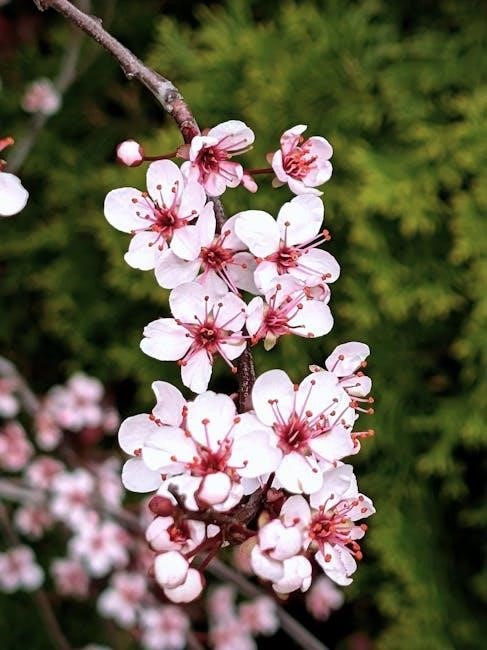
Gardening Techniques for Zone 3a
Zone 3a gardeners employ strategies like cold frames, companion planting, and crop rotation to optimize growth. These methods help extend the short growing season and protect plants from harsh conditions.
5.1 Using Cold Frames and Greenhouses
Cold frames and greenhouses are essential tools for Zone 3a gardeners, allowing plants to thrive despite the region’s short growing season. Cold frames act as miniature greenhouses, trapping sunlight and protecting plants from frost. They are ideal for hardening off seedlings or extending the growing season for cool-season crops like spinach and lettuce. Greenhouses provide even greater control over temperature and humidity, enabling gardeners to grow a wider variety of plants year-round. By using these structures, Zone 3a gardeners can start seeds earlier in the spring and continue harvesting later into the fall. Proper ventilation and insulation are key to maintaining optimal conditions within these structures, ensuring healthy plant growth and maximizing the gardening season in this challenging climate.
5.2 Companion Planting Strategies
Companion planting is a valuable technique for Zone 3a gardeners, enhancing growth and reducing pests naturally. Pairing plants like marigolds with tomatoes deters nematodes, while basil improves flavor and repels pests. The “Three Sisters” method—growing corn, beans, and squash together—promotes soil fertility and structural support. Herbs like mint and lemongrass repel insects, protecting nearby plants. Planting nasturtiums with cabbage or kale discourages aphids, while radishes can deter cucumber beetles. These strategies optimize space, improve soil health, and create a balanced ecosystem. Experimenting with combinations can help Zone 3a gardeners maximize yields and resilience in their challenging climate. Proper planning ensures compatibility and avoids growth competition, making companion planting a simple yet effective practice for thriving gardens.
5.3 Crop Rotation for Optimal Growth
Crop rotation is essential for maintaining soil health and maximizing yields in Zone 3a. Rotate crops annually to avoid depleting soil nutrients and reduce pest buildup. Divide plants into groups like root vegetables, leafy greens, and brassicas. Rotate these groups seasonally to replenish soil nutrients and prevent disease. For example, follow nitrogen-fixing legumes with heavy feeders like corn; Incorporate cover crops in rotations to enhance soil fertility. This practice ensures balanced nutrient levels and minimizes pest and disease issues. Proper crop rotation aligns with Zone 3a’s short growing season, optimizing growth and resilience. It’s a simple yet effective method for sustainable gardening in challenging climates.
5.4 Organic Gardening Methods
Organic gardening in Zone 3a focuses on natural methods to enhance soil health and plant resilience. Use compost and well-rotted manure to enrich the soil, improving its structure and fertility. Mulching retains moisture and suppresses weeds, while cover crops like clover and rye protect soil over winter. Avoid synthetic fertilizers and pesticides; instead, employ natural pest control by attracting beneficial insects. Companion planting, such as pairing marigolds with tomatoes to deter nematodes, is highly effective. Crop rotation and organic amendments help maintain a balanced ecosystem. These practices not only promote sustainable gardening but also ensure healthy plant growth despite the region’s harsh climate. By adopting organic methods, gardeners in Zone 3a can create thriving, chemical-free gardens tailored to their unique conditions.

Managing Challenges in Zone 3a
Zone 3a gardeners face a short growing season, frost risks, and cold temperatures. Strategies like selecting frost-tolerant plants, using cold frames, and protecting plants during frost events help overcome these challenges.
6.1 Dealing with Short Growing Seasons
Gardeners in Zone 3a face a brief growing season, requiring careful planning. Choosing varieties with shorter maturation periods ensures crops mature before the first frost; Early planting strategies, such as starting seeds indoors and using cold frames, extend the season. Selecting frost-tolerant plants like spinach, lettuce, and kale allows for late-season harvests. Crop rotation and soil preparation enhance growth efficiency, maximizing the short window. Additionally, using greenhouses or row covers protects plants from unpredictable frosts, ensuring a successful harvest despite the challenging climate.
6.2 Protecting Plants from Frost
Protecting plants from frost is essential in Zone 3a, where temperatures can drop rapidly. Using cold frames, greenhouses, or row covers provides insulation and shields plants from frost damage. Bringing potted plants indoors during extreme cold snaps is another effective strategy. Mulching around plants helps retain soil warmth and prevents root damage. Timing plantings according to the last frost date ensures tender plants aren’t exposed too early. Frost-sensitive plants can be covered with blankets or burlap during predicted frosts. Even hardy perennials may benefit from light protection during unusually harsh conditions. Monitoring weather forecasts and acting promptly is key to preserving your garden through Zone 3a’s unpredictable frosts.
6.3 Managing Pests and Diseases
Managing pests and diseases in Zone 3a requires proactive strategies due to the region’s short growing season and cold climate. Common pests like aphids, slugs, and root maggots can damage plants quickly. Regular monitoring and early identification of infestations are crucial. Organic methods such as neem oil, diatomaceous earth, and insecticidal soap are effective for controlling pests. Crop rotation and companion planting can also help deter pests naturally. Diseases like powdery mildew and root rot thrive in moist conditions, so ensuring good air circulation and well-draining soil is essential. Using resistant plant varieties and practicing good garden hygiene can prevent the spread of diseases. Applying mulch and maintaining soil health further supports plant resilience against pests and pathogens.

Tools and Resources for Zone 3a Gardeners
Essential tools include gloves, shovels, and cold frames. Apps like Garden Plan Pro offer planting charts, while local nurseries provide zone-specific advice and materials for success.
7.1 Essential Gardening Tools
For gardening in Zone 3a, having the right tools is crucial for success. A sturdy shovel and trowel are essential for soil preparation and planting. Gloves protect hands from cold and abrasion. A tiller or cultivator helps prepare the soil quickly, especially in areas with heavy clay or dense ground. Rakes are indispensable for leveling soil and removing debris. Watering cans or hoses with spray nozzles ensure plants receive adequate moisture without overwatering. Pruning shears and loppers are necessary for maintaining shrubs and fruit trees. A wheelbarrow or garden cart simplifies transporting materials like compost or mulch. Cold frames and greenhouses extend the growing season by protecting plants from frost. Mulch and composting tools, like pitchforks, aid in soil enrichment and moisture retention. Investing in durable, weather-resistant tools ensures longevity and efficiency in Zone 3a’s challenging climate.
7.2 Planting Charts and Apps
Planting charts and apps are invaluable resources for Zone 3a gardeners, helping them plan and manage their gardens effectively. These tools provide detailed information on optimal planting times, soil conditions, and frost dates specific to the region. Apps like Garden Plan Pro and Seed Savers Exchange offer customizable planting calendars and space optimization features. West Coast Seeds and Almanac.com provide zone-specific planting charts, ensuring gardeners can time their seed starts and harvests accurately. Interactive tools also allow users to track progress, set reminders, and access weather forecasts. Additionally, many apps offer databases of plants suitable for Zone 3a, along with care tips and companion planting advice. These resources empower gardeners to make informed decisions, maximizing their success in Zone 3a’s short growing season and challenging climate conditions. Utilizing these tools helps gardeners stay organized and productive throughout the year.
7.3 Local Nurseries and Gardening Communities
Local nurseries and gardening communities play a vital role in supporting Zone 3a gardeners. These nurseries often specialize in plants adapted to the region’s climate, offering hardy perennials, native species, and cold-tolerant varieties. Many provide expert advice tailored to local conditions, helping gardeners choose appropriate plants and techniques. Gardening communities, both online and in-person, foster collaboration and knowledge sharing. Platforms like local gardening forums, social media groups, and workshops allow gardeners to exchange tips, discuss challenges, and learn from others’ experiences. Some communities organize seed swaps, plant exchanges, and educational events, further enriching the gardening experience. Engaging with these local resources ensures gardeners in Zone 3a can access region-specific guidance, build relationships, and enhance their gardening success. These networks are especially valuable in addressing the unique challenges of Zone 3a’s short growing season and cold winters.
Gardening in Zone 3a offers unique challenges but also opportunities for growth. With proper planning and resilience, gardeners can thrive in this climate, fostering a vibrant future for local horticulture.
8.1 Summary of Key Points
Gardening in Zone 3a requires understanding its unique climate and soil conditions. The zone is characterized by long, cold winters and a short growing season, making plant selection critical. Vegetables like lettuce, spinach, and root crops thrive, while fruit trees and shrubs must tolerate extreme cold. Perennials and native plants are ideal for resilience. Planting calendars should align with frost dates, and techniques like cold frames can extend the season. Soil preparation and moisture management are vital for optimal growth. Challenges include frost protection and pest control, but with proper strategies, gardeners can succeed. Using local resources and staying informed about zone-specific practices ensures a thriving garden in Zone 3a.
8.2 Encouragement for Zone 3a Gardeners
Gardening in Zone 3a presents unique challenges, but it also offers rewarding opportunities to connect with nature and grow resilient plants. Despite the short growing season and cold winters, the sense of accomplishment in nurturing thriving plants is immense. With proper planning, creativity, and knowledge of zone-specific strategies, gardeners can enjoy a vibrant and productive garden. Experiment with cold-hardy varieties, utilize techniques like cold frames, and embrace the beauty of native plants. Every successful harvest, no matter how small, is a testament to your dedication and skill. Stay inspired by the camaraderie of local gardening communities and the joy of watching life flourish in your care. Zone 3a gardening is not just about growth—it’s about perseverance and the beauty of nurturing life in a challenging climate.
